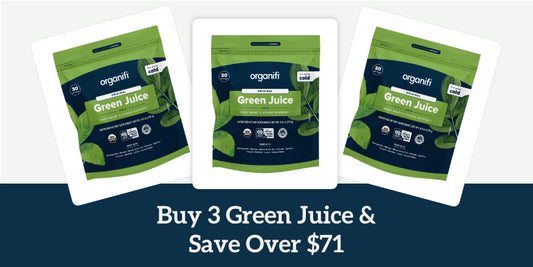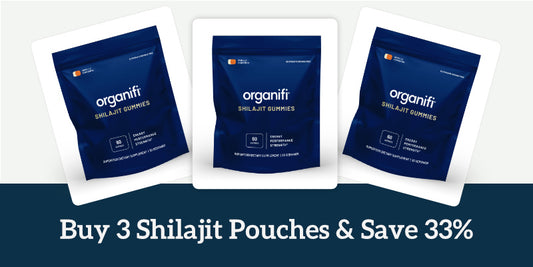The surprising astaxanthin benefits for human health may make this powerful antioxidant your next ally in pain management, joint pain prevention, and potentially healthy hair, skin, and nails.
Astaxanthin could be one of the most potent antioxidants available in nature to date.
While research regarding astaxanthin benefits for human health is in the early stages, astaxanthin supplements could be an excellent alternative (or complementary form of therapy) for multiple health issues.
Anything from knee pain, degenerative cognitive illnesses like Alzheimer’s, and even hair growth.
It is a natural compound that gives certain seafood its natural red, orange, and pink color.
It gives trout, salmon, crab, lobster, and shrimp flesh pink their characteristic pink color and its highest concentrations are found in the muscles of salmon. This remarkably robust antioxidant could be behind the strength and endurance this fish needs to swim upstream for reproduction.
The reason astaxanthin supplements are becoming more popular is that the antioxidant power of this keto carotene could be better in the long run for the body, when compared to other sources like beta carotenes from carrots, Vitamins C, E, and D.
Astaxanthin seems to always remain an antioxidant, even after synthesis, unlike these vitamins and minerals.
What is Astaxanthin? Is it An Additive?
Astaxanthin is part of the group of micronutrients called “carotenoids,” which you may have heard of before as “beta carotenes,” although they are not the only ones. Carotenoids are fat-soluble pigmented phytochemicals that give the bright orange, red, or yellow color to fruits, vegetables, algae, bacteria, and animals.
There are over a thousand types of carotenoid compounds, but they can be generally divided into xanthophylls and carotenes.
-
Xanthophylls: a name derived from yellow leaves, they can be found in pumpkin, egg yolks, summer squash, avocado, and even kale. They contain oxygen.
- Carotenes: found in tomatoes, sweet potatoes, papaya, and carrots, unlike the former, these are non-oxygenated compounds.
Astaxanthin is a keto carotene produced naturally in freshwater microalgae called Haematococcus Pluvialis and the yeast fungus Xanthophyllomyces. It’s part of the Xanthophylls family.
It is not an artificial additive, although its name often reminds people of aspartame and other forms of sugar. Instead, it is a powerful antioxidant often dubbed the “king of carotenoids.”
Astaxanthin benefits may come from its possibly permanent antioxidant capacity: it never turns into a pro-oxidant like other vitamins, and that means that it may never add to the body’s oxidative stress.
Research suggests that it does not oxidize the body and, therefore, cannot contribute to its decay.
How Does Astaxanthin Work?
Antioxidants help the body maintain a healthy oxidative balance. Whenever the body uses energy, processes food, or performs any of its natural processes to keep your systems running in harmony (also known as homeostasis), it produces oxidation.
Free radicals are naturally occurring byproducts of the normal chemical reactions that keep the body working. Antioxidant forces, coming from your nutrition, help counteract these reactions and neutralize those free radicals.
Free radicals are orphaned electrons that seek another electron to pair themselves with. These electrons end up attaching themselves to healthy molecules, damaging cell structures, producing oxidative stress, and leading to aging and decay.
Astaxanthin benefits come from its exceptionally higher antioxidant activity when compared with other carotenes and vitamins. Additionally, it can stay as an antioxidant force throughout its entire metabolization, unlike Vitamin A.
Most people in the US fail to get adequate levels of antioxidants from food, considering that their diet lacks the minimum recommended five servings of fruits and vegetables per day. Astaxanthin benefits people with antioxidant deficiencies because:
- It may 600 times more potent than Vitamin C
- 5X Richer than beta carotenes
- May be 550 times more effective as an antioxidant than vitamin E
- 770 Times richer than Coenzyme Q10
Furthermore, astaxanthin reacts as a strong antioxidant without any pro-oxidative nature. This makes it a gentle antioxidant on the body, while also effectively neutralizing free radicals.
It’s important to note that free radicals are not all bad; they also have a vital function in the body. The immune system uses them at times to fight off harmful microorganisms and bacteria. It’s only when they’re unbalanced that they negatively impact the body.
Antioxidants reverse the process of oxidation, which may come from external factors that contribute to oxidative stress. An acidic diet, alcohol intake, smoking, toxins, air pollution, and too little blood oxygenation are just a few examples of external factors that contribute to that excess oxidation.
Astaxanthin Benefits for Health
#1 May Reduce Oxidative Stress
The first and most well-known astaxanthin capacity. Astaxanthin benefits the immune system, skin, brain, and more with its antioxidant capacity. Multiple studies suggest that astaxanthin inhibits oxidative stress mitochondrial dysfunction and related diseases.
#2 Could Fight Inflammation
In addition to reducing oxidative stress and boosting the immune system, astaxanthin benefits the body inhibiting inflammation markers. Researchers found that dietary astaxanthin supplements decreases DNA damage and enhances the immune response.
#3 May Relieve or Prevent Joint Pain
Joint pain, whether due to osteoarthritis, wear and tear, injury, or more, could be reduced, managed, or prevented with astaxanthin supplements. Because it reduces inflammation and oxidative stress, both critical factors in joint pain, astaxanthin benefits cartilage protection, regeneration as well as joint recovery.
Additionally, research shows that astaxanthin blocks COX 2 enzymes, just like most prescribed drugs against osteoarthritis pain, menstrual cramps, and Rheumatoid arthritis.
#4 Might Slow Down Aging
Due to the high antioxidant content, the capacity to remain one even after metabolization, potential to improve blood flow, and support skin, hair, and nail repair, some studies argue that the astaxanthin benefits go beyond fighting inflammation and oxidative stress; it might slow down the aging process.
#5 Could Support Eye Health
Astaxanthin supplements both on its own and in addition to other compounds, have shown that astaxanthin benefits eye health. It combats eye fatigue, macular degeneration, eye strain, and more.
#6 May Help Improve Exercise Recovery
While still in the early stages of research, animal studies show that astaxanthin benefits endurance and the synthesis of fatty acids, which prevents muscular and skeletal damage related to exercise.
Astaxanthin supplements have yet to be proven as fitness boosters, but the anti-inflammatory and antioxidant capacity of this natural product makes it a promising option.
#7 Could Support Cardiovascular Health
Astaxanthin supplements might improve blood flow, normalize adrenaline levels, restore vascular tone, lower cholesterol, and protect against blood clots. These astaxanthin benefits must be studied further, but research suggests it could be an effective form of therapy for hypertense people.
#8 Might Protect Skin Against UV Ray Damage
In addition to the potential anti-aging astaxanthin benefits listed above, studies suggest that it could protect the skin against UVA-induced photo-aging in the form of sagging and wrinkles.
#9 May Have Neuroprotective Effects
Astaxanthin supplements may help prevent or co-treat several neurological illnesses, including Alzheimer’s and Parkinson’s disease, according to recent studies. Astaxanthin benefits blood flow and may be able to cross the blood-brain barrier, improving cognitive function with its oxidative, anti-inflammatory, and anti-apoptotic properties.
#10 Could Help Strengthen the Immune System
With its high antioxidant power, astaxanthin supplements could help boost immune response, increase white blood cell count, and help the body fight infection.
How to Get Astaxanthin
The human body cannot produce astaxanthin on its own, which means you have to get it through natural foods or astaxanthin supplements. If you’re not living a plant-based lifestyle, the best way to get it is through seafood, like salmon, shrimp, lobster, and rainbow trout.
However, you might need to eat a lot of it to get the benefits of astaxanthin in your organism; salmon, one of the richest sources available, only has 4.5mg per ounce. You’d need a lot more than that.
Astaxanthin supplements make it easy for all people to access the benefits. Pluvialis algae have the highest bioavailable amount of astaxanthin and it is the only supplement source approved by the Food and Drug Administration (FDA) as a safe and viable source of dietary astaxanthin.
If you’re interested in the benefits of astaxanthin for your health Organifi is preparing a joint support supplement that includes astaxanthin, in addition to other healthy natural ingredients, giving your body the ability to move freely and with ease for longer.
The Bottom Line
Astaxanthin is still in the early stages of research for human health; however, in the past fifteen years many studies, both in animal and human research projects, have shown that the potential health benefits of astaxanthin make it a worthwhile supplement to explore.
Considered a safe natural supplement, astaxanthin could be an excellent form of alternative and complementary therapy for people with joint pain, inflammation, history of degenerative cognitive conditions, heart conditions, and more.
There is no recommended dosage or standard available at the moment for astaxanthin, but it may soon have one available as more studies investigate its antioxidant capacities and health benefits.
Do you have any other questions regarding the health benefits of astaxanthin? Have you heard of it before? If you found this guide useful, share it with a friend and help keep then healthy.
We’re in this together.




